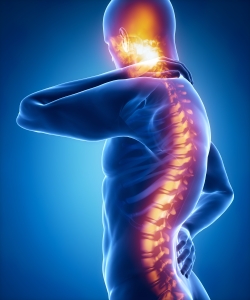According to a recent study by the University of Gothenburg indicated that spinal compression fractures are quite prevalent among elderly persons, and those with such fractures are at increased risk of suffering new ones. According to the study, an X-ray approach should be made a normal operation in Swedish health care so that more senior individuals may be treated and given the most effective medications on time.
Vertebral compression is a condition in which the spine is compressed, resulting in a fracture in one of the vertebrae. Vertebral compression fractures (VCFs) are common in persons with osteoporosis, and they disproportionately impact older women.
The study backs up earlier findings that 25% of elderly women aged 75 to 80 have VCFs. However, the majority are unaware that they are causing their back discomfort; just one in three is diagnosed. According to Statistics Sweden (SCB), at least 40,000 elderly women in Sweden are unaware they have VCFs.
Diagnostic spinal imaging is necessary
Vertebral compressions do not always cause noticeable symptoms. Imaging is required to detect these spinal fractures. Many fractures, great pain, and significant expenditures may be avoided if more patients were diagnosed.
“People who have had a spinal compression fracture are more than twice as likely to have another one, putting them in the high-risk category.”
As a result, they should be evaluated for the most effective treatments that not only prevent bones from collapsing but also build them up,” says Lisa Johansson, a PhD student at Sahlgrenska Academy, University of Gothenburg, who wrote the thesis.
Efforts to prevent fractures in the elderly differ across the country. There are established “fracture liaison services,” as they are known in Sweden, in certain but not all locations. These guarantee that fracture examinations are arranged in such a way that the likelihood of recurring fractures is considerably reduced. When older individuals have fractures, their hip and lumbar spine bone density is assessed using the dual-energy X-ray absorptiometry (DXA) technique to determine whether they require osteoporosis therapy.
DXA may then be used to obtain a side image of the chest and lumbar spine using a technique known as vertebral fracture assessment (VFA), which analyses the height of the vertebrae.
It should be a standard process.
The thesis demonstrates that VFA has significant therapeutic benefits, and the findings imply that the approach should be implemented as a normal treatment in health care across the country.
“The VFA approach uses very little radiation and is quick, affordable, simple, and successful in detecting spinal compressions. It’s a useful way for detecting relevant compressions and enhances fracture risk assessment in elder women “Johansson explains.
The SUPERB (Sahlgrenska University Hospital Prospective Evaluation of Risk of Bone Fractures) population research comprised 3,028 women between the ages of 75 and 80 in Gothenburg. According to the study, women with VCFs had decreased hip bone density to a higher extent, as well as inferior physical functional ability and health. Women with detectable spinal compression, even if slight, had a significantly higher fracture risk that was independent of other risk variables and bone density.





